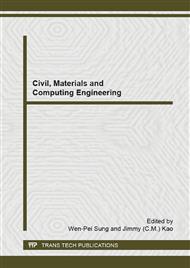p.668
p.672
p.679
p.683
p.686
p.690
p.694
p.702
p.707
Manage of Basic Nursing to Construct Knowledge Structure
Abstract:
This study is to provide an integrated method and algorithm for knowledge structure analysis and cognition diagnosis. Most researchers of educational measurement analyzed testing data from paper-pencil test by classical test theory (CTT) or interviewed with students in order to acquire students’ knowledge structures. Moreover, it is considered that knowledge structures are important for instruction. Information of knowledge structures is useful because it will be helpful for cognition diagnosis so that remedial instruction becomes feasible.
Info:
Periodical:
Pages:
686-689
Citation:
Online since:
December 2014
Authors:
Keywords:
Price:
Сopyright:
© 2015 Trans Tech Publications Ltd. All Rights Reserved
Share:
Citation:


